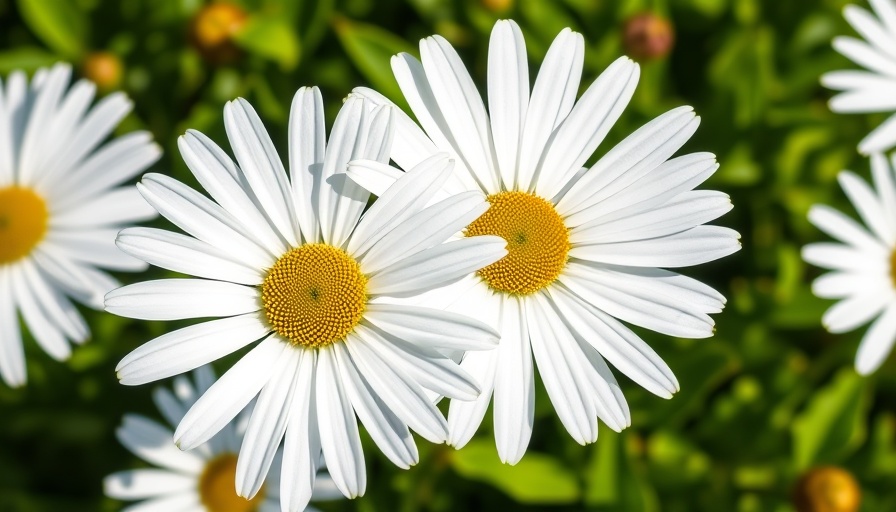
Unlock the Secret to Radiant Shasta Daisies in Containers
Summer blooms bring joy and color to any garden, and Shasta daisies, with their cheerful white petals and sunny yellow centers, are a favorite choice for flowering containers. Whether you’re a seasoned gardener or just starting out, these stunning perennials can light up balconies, decks, and patios with their long-lasting bloom. In this comprehensive guide, we will explore everything you need to know to grow Shasta daisies in pots, from the basics of planting to care tips that ensure a flourishing display.
Understanding Shasta Daisies: The Basics
Shasta daisies are not just pretty to look at; they are resilient and easy to grow, making them ideal for anyone wanting to add delightful flower power to their container gardens. Preferring full sun but tolerating partial shade, these hardy perennials thrive in USDA hardiness zones 4 through 9. When planting, aim for soil that is rich in organic matter and drains well, with a pH of 5.5 to 7.0. While Shasta daisies exhibit some drought tolerance once established, they flourish best with regular watering, maintaining soil moisture without waterlogging.
Selecting the Perfect Container for Your Shasta Daisies
Container selection is crucial for the successful growth of Shasta daisies. It's essential to choose pots that are at least 12 inches deep and wide, as these plants form clumps that require space to spread. Various materials—ceramic, fiberglass, metal, and wood—can be used, but if you live in colder climates, avoid materials prone to cracking in frost, like terracotta. To ensure your containers have ample drainage, always opt for pots with holes at the bottom and consider adding a layer of gravel or broken pottery before filling with soil, ensuring excess water drains away.
Care for Thriving Shasta Daisies
Once your Shasta daisies are planted, maintaining their health becomes key to achieving vibrant blooms. Regular deadheading, or removing spent flowers, encourages new growth and prolongs the blooming period throughout summer. Additionally, keep an eye on soil moisture and assist your plants’ health with an organic fertilizer during the growing season. While these daisies are relatively pest-resistant, being vigilant against common garden pests like aphids helps maintain their beauty.
Choosing the Right Cultivars for Your Container Design
There are several attractive Shasta daisy cultivars to consider for your containers. Classic varieties such as 'Alaska' feature large white flowers, complemented by the compact 'Snowcap' which grows well in smaller pots. Additionally, you may wish to explore newer hybrids that offer unique flowers and extended color ranges, giving you plenty of options for creating visually appealing compositions alongside other container plants.
Planning for Seasonal Changes: Winterizing Your Containers
As outdoor temperatures drop, you may wonder how to protect your Shasta daisies. If you live in regions where winter temperatures fall below freezing, it is crucial to either bring the containers indoors or place them in a sheltered outdoor spot, ideally against a wall for added warmth. Insulating materials like bubble wrap can be wrapped around the pots to protect the roots from freezing. Adjust your watering schedule during the colder months as well, ensuring the soil remains moist but not overly saturated.
Creating a Pollinator Paradise with Shasta Daisies
Shasta daisies attract a variety of pollinators, including bees, butterflies, and beneficial insects like ladybugs, making them a perfect addition to any garden focused on biodiversity. By planting alongside companion plants, such as lavender or bee balm, you can further entice helpful wildlife to your garden. This not only benefits your Shasta daisies but also enhances the entire container garden’s ecological value.
Final Thoughts: The Joy of Growing Shasta Daisies
Adding Shasta daisies to your containers opens a world of vibrant beauty and ecological benefits. With their easy care, resilience, and ability to fill spaces with life—both visually and biologically—they serve as a delightful reminder of the joys of gardening. Whether you’re filling a small patio or rejuvenating a backyard space, these flowers will surely dazzle throughout the summer months. Get your hands in the soil and enjoy the rewarding process of nurturing these spectacular plants to life!
 Add Row
Add Row  Add
Add 




Write A Comment